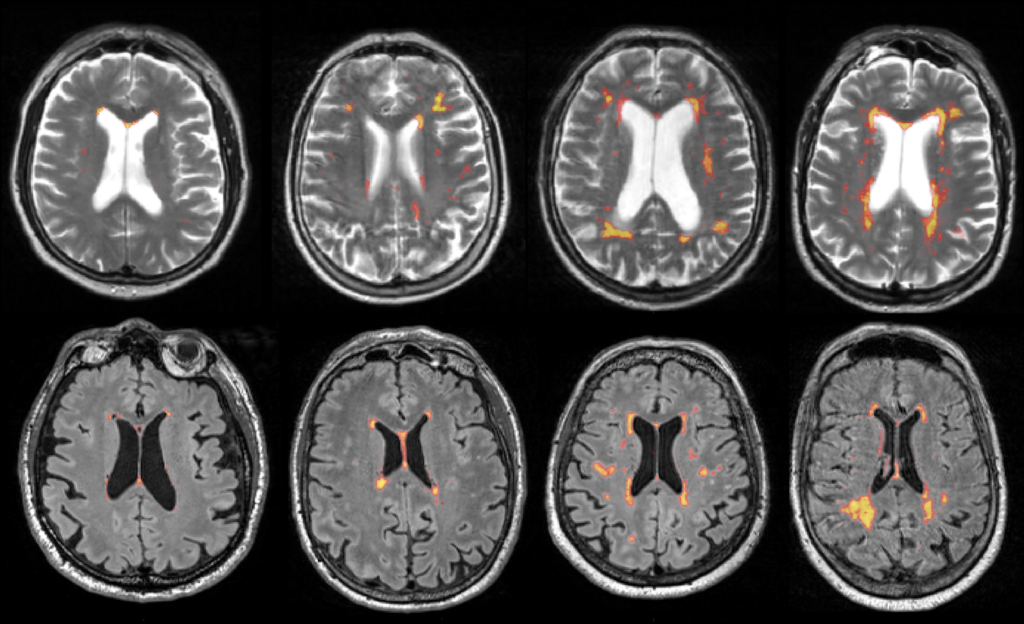Alongside Alzheimer’s disease, changes to the brain’s vascular system are the most common cause of dementia.
So-called white matter lesions are indications of tiny vascular damage in the brain and can be measured in an MRI scan. They are very common in older people and are linked, for example, to slower thinking in everyday life.
Using data from over 2,800 study participants over the age of 65, the members of the SHIVA Consortium Frauke Beyer and Debette Stéphanie investigated where such lesions occur in the brain, which factors favour their occurrence and how they are linked to stroke and dementia.
« There is currently no treatment for these lesions, even though they are a major risk factor for stroke and dementia »
Frauke Beyer, lead author of the study, which was recently published in the journal Alzheimer’s and Dementia.

In order to find out how existing drugs could be prescribed, it was important for the researchers to first understand which factors play a role in the development of lesions at different locations in the brain.
To do this, they analysed DNA and blood samples from the study participants from Germany and France, who also had to solve mental tasks while lying in a magnetic resonance imaging (MRI) scanner.
« We have found that lesions occur at typical locations in the brain, presumably because they are based on different mechanisms. In the case of lesions around the ventricles, high blood pressure in particular plays a role, and in the case of lesions in the deep white matter, we suspect a connection with the deposition of amyloid in the vessel walls, a protein that also occurs in Alzheimer’s ». As these lesions can become visible from the age of forty, more could be done preventively here »
Frauke Beyer
Now, the scientists want to conduct follow-up studies to find out which genetic factors could underlie the lesions at the various locations in the brain. This could enable targeted therapies in the future.